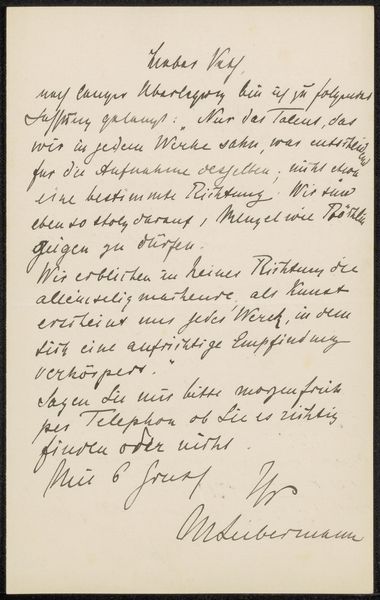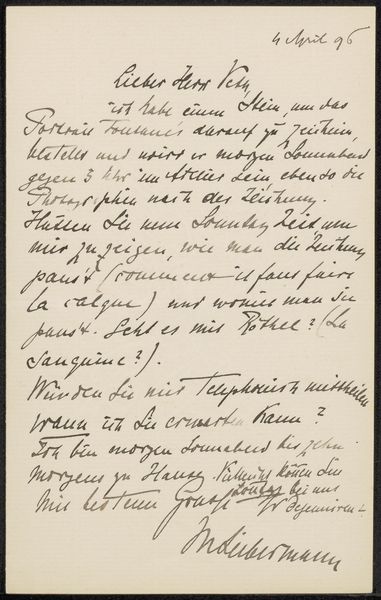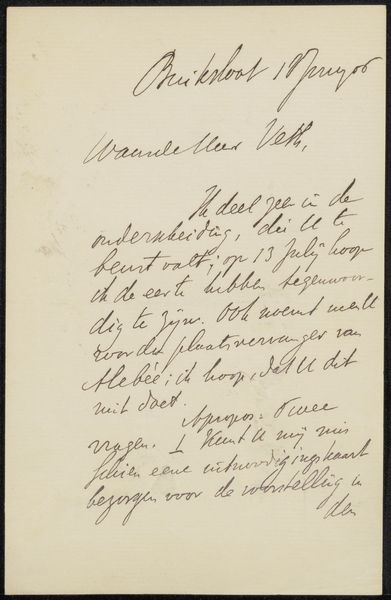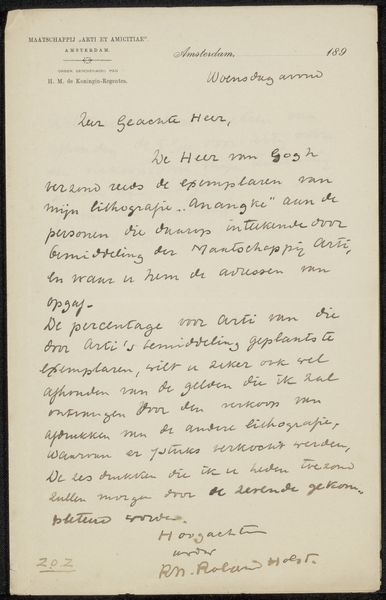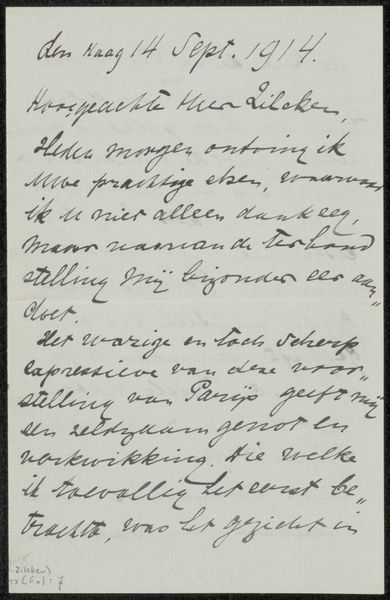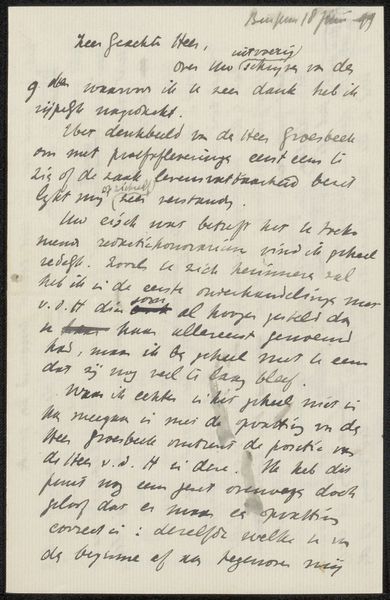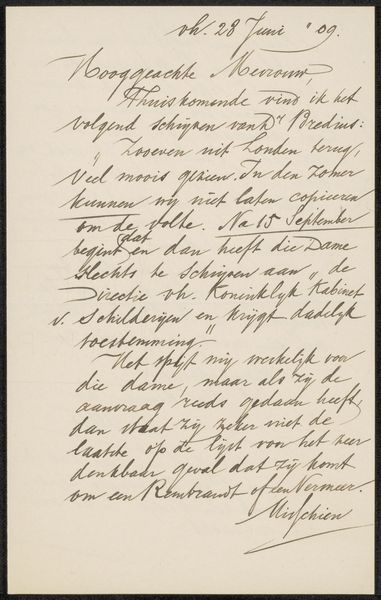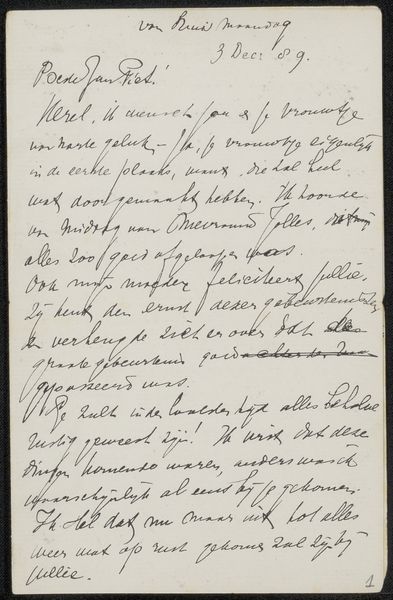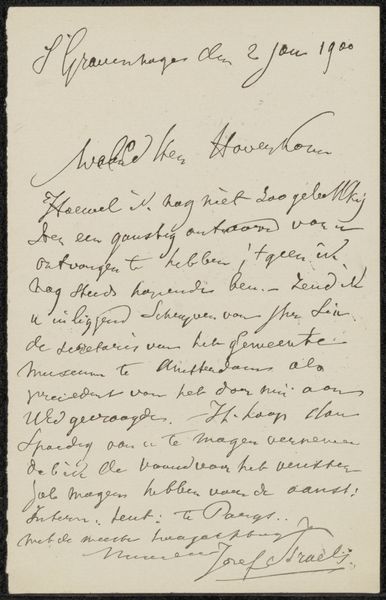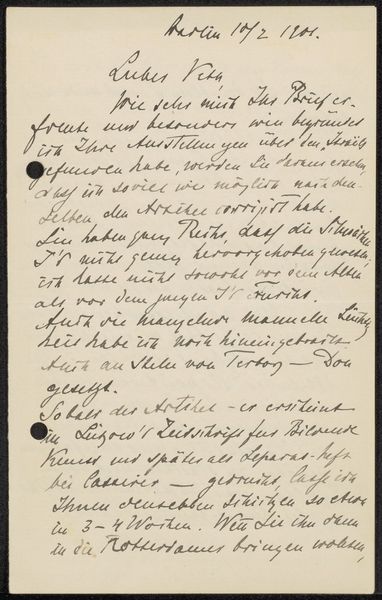
drawing, paper, ink, pen
#
drawing
#
hand-lettering
#
old engraving style
#
hand drawn type
#
hand lettering
#
paper
#
personal sketchbook
#
ink
#
hand-drawn typeface
#
pen work
#
sketchbook drawing
#
pen
#
handwritten font
#
sketchbook art
Copyright: Rijks Museum: Open Domain
Editor: Here we have "Brief aan Philip Zilcken," a letter from Grada Hermina Marius, created sometime between 1901 and 1907, using pen and ink on paper. It feels incredibly intimate, like peering into a private correspondence. I'm immediately drawn to the elegant script; it's beautiful but difficult to decipher. How do you interpret this work as an artifact, and what does the lettering tell us? Curator: For me, the handwriting is the key to unlocking its symbolic value. Look at the deliberate loops and the sharp angles. Each stroke carries the weight of Marius's intent. In a world before emails, handwriting was deeply personal; it reveals character, mood. This letter, even without understanding the precise content, evokes a sense of artistic dialogue between Marius and Zilcken, connecting to a tradition of intellectual exchange that relies on carefully constructed visual forms of letters, beyond mere communication. What feelings does the style of script evoke for you? Editor: There's definitely a formality to it, a sense of care and precision. It’s so unlike the casual digital communication of today; it implies a different relationship with language itself. Curator: Exactly. The visual weight of each word becomes significant. This isn’t just about the message, but the act of creation. Marius has invested her persona, beliefs, and intent into each glyph of ink upon this paper. The choice of a handwritten letter speaks to values, even beyond what is directly said. Can you infer a subtext from the penmanship itself? What could it suggest beyond the words' literal meanings? Editor: I guess I see a striving for elegance, sophistication, perhaps even a hint of authority through the carefully formed letters. It definitely prompts a consideration of our contemporary relationships to handwriting in an increasingly digital world. Curator: Indeed. The loss of handwriting also implies losing an avenue to reveal identity, and intentionality. In turn, new symbolisms have risen, informed by the digital, such as emojis. Letters, even personal letters, take on cultural memory and carry emotional weight beyond simple communication, providing intimate historical and cultural connections through time. Editor: It makes you wonder what future generations will make of our digital footprints and how much of our intention might be lost in translation.
Comments
No comments
Be the first to comment and join the conversation on the ultimate creative platform.
